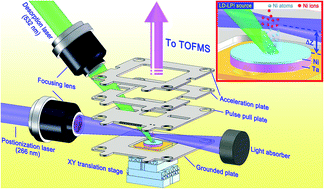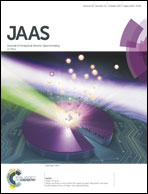Depth profiling of nanometer thin layers by laser desorption and laser postionization time-of-flight mass spectrometry
Abstract
A depth profiling technique has been developed and employed for ultra-thin layer analysis using a newly constructed laser desorption and laser postionization time-of-flight mass spectrometer (LD-LPI-TOFMS). This technique achieves the superiority of an extremely low average ablation rate down to ∼0.026 nm in depth per pulse for a series of Ni coated samples with varied thicknesses. Compared to high-cost SIMS apparatus, it offers an alternative strategy for nanometer thin-layer analysis. The integration of the LD-LPI source and TOFMS offers multi-element information on the constituents of each layer and substrate, as well as the trace impurities of sputtering targets. It contributes to comprehensively characterizing nanometer thin layers for the quality evaluation and process control of coatings. Additionally, an underlying capability of this method for the thickness determination of thin-layers was demonstrated. The investigations and results here indicate the potential of LD-LPI-TOFMS as a versatile tool among the available techniques in depth profiling of nanometer thin-layers, filling the gap in ultra-thin layer analysis for laser-based techniques.



 Please wait while we load your content...
Please wait while we load your content...